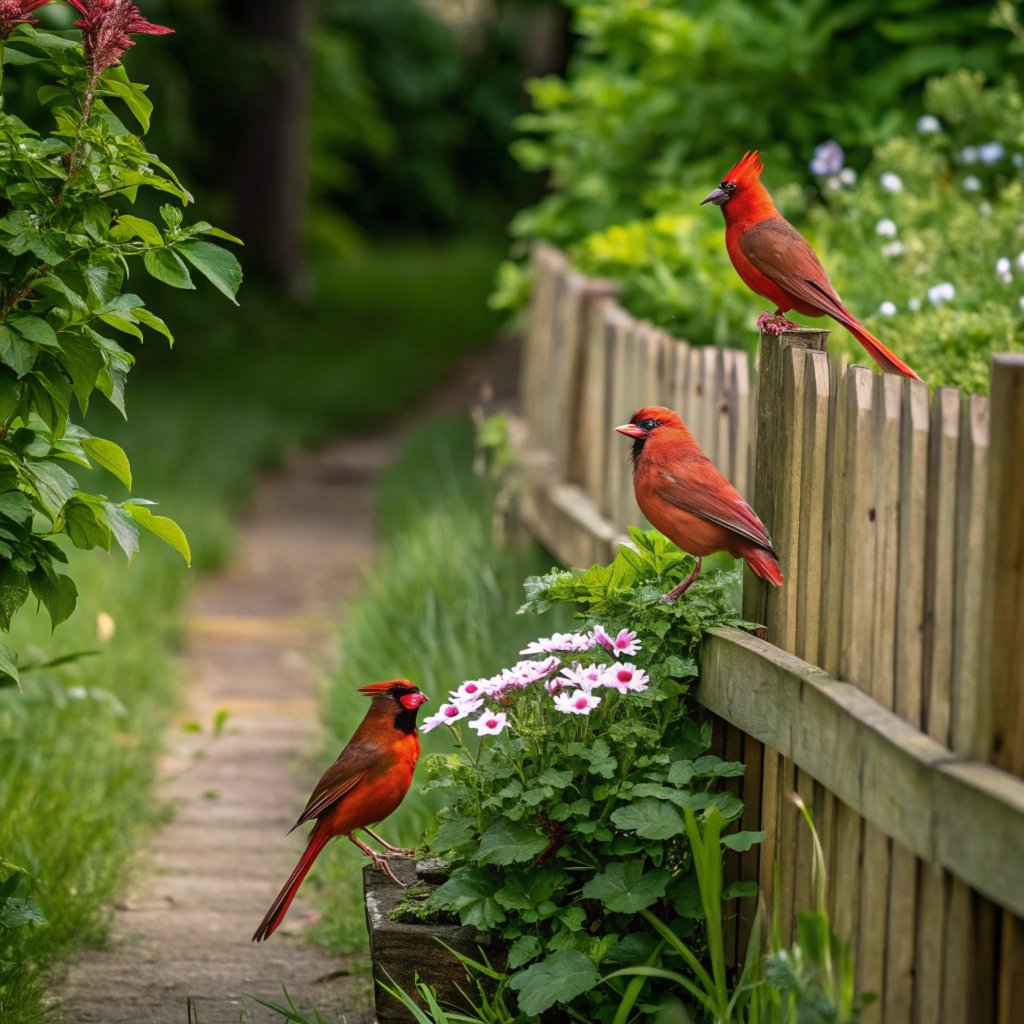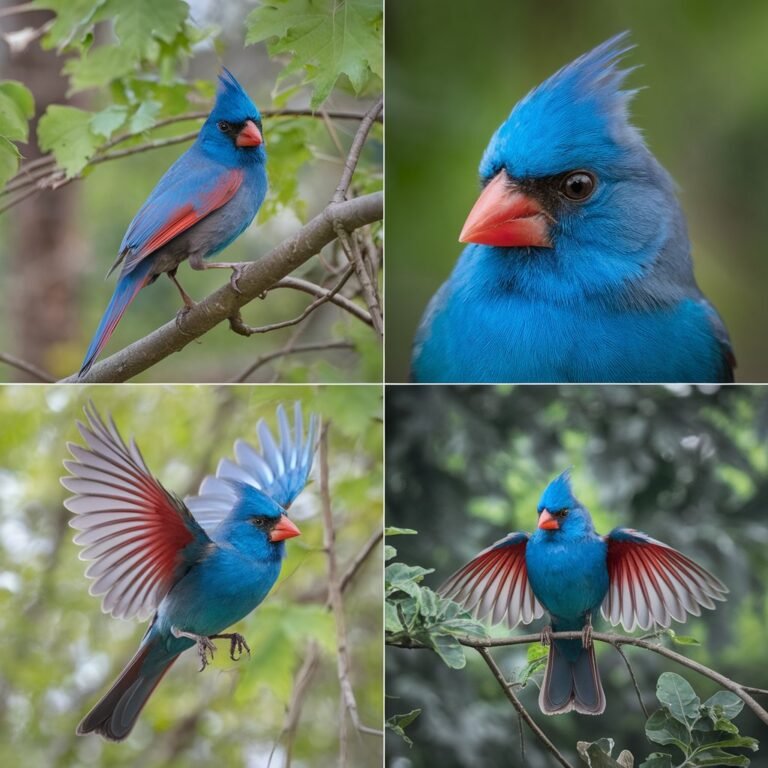How to Attract Cardinals to Your Garden: A Comprehensive Guide
Cardinals, with their striking red feathers and melodious songs, are among the most cherished birds for garden enthusiasts and bird watchers alike.
These beautiful creatures are not only a delight to observe but also add vibrant life and color to any outdoor space.
If you’ve ever wondered how to make your garden a haven for cardinals, you’re in the right place!
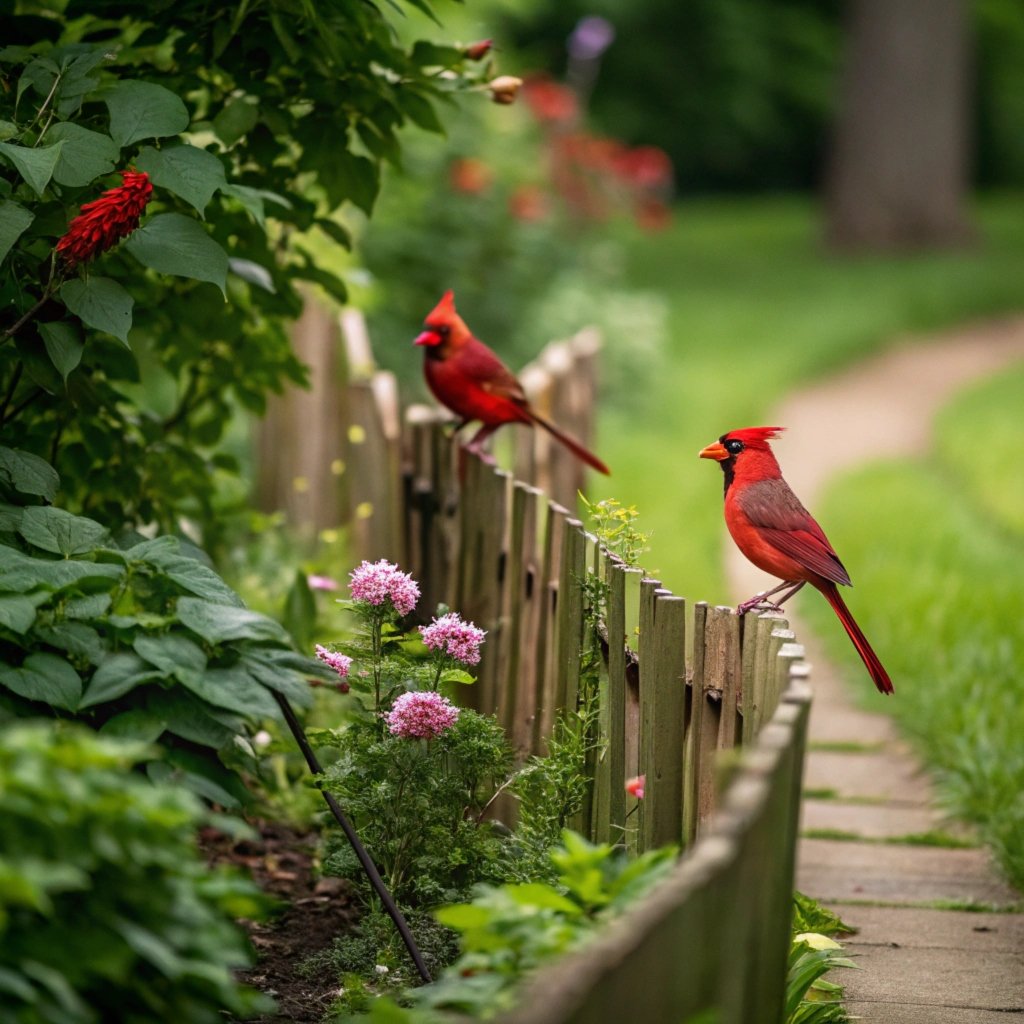
Key Takeaways:
- Cardinals thrive in gardens with dense shrubs and trees, offering them shelter and secure nesting spots.
- Providing the right food like sunflower seeds, safflower seeds, and various berries is crucial for attracting these colorful birds.
- Water sources, such as birdbaths or running water features, are essential for hydration and bathing.
- Cardinals prefer platform or hopper feeders that can accommodate their size and weight comfortably.
- Planting native berry-producing shrubs and seed-bearing flowers can naturally attract cardinals to your garden.
- Ensure your garden offers safety from predators, with strategic placement of feeders near protective cover.
- Cardinals are non-migratory birds, so maintaining a consistent food supply year-round will keep them coming back.
- Avoid common mistakes like using small feeders or failing to provide adequate shelter and protection.
- Creating a diverse landscape with a mix of open areas and dense vegetation can make your garden more appealing to cardinals.
- Seasonal adjustments to your garden and feeding strategies can help attract and retain cardinals throughout the year.
Let’s dive deeper into each aspect of creating a cardinal-friendly garden that will have these beautiful birds flocking to your backyard!
Understanding the Beauty and Behavior of Cardinals
Cardinals, scientifically known as Cardinalis cardinalis and commonly referred to as Northern Cardinals, are medium-sized songbirds renowned for their vibrant red plumage in males and soft, warm brown tones in females.
Their cheerful chirps, whistles, and songs can brighten even the dullest of days, making them a favorite among bird enthusiasts and casual observers alike.
These stunning birds symbolize joy, vitality, and warmth, which is why many people are eager to attract them to their gardens.
Cardinals are known for their distinctive crest and strong beak, perfect for cracking open seeds.
Their presence in a garden not only adds visual appeal but also contributes to the overall ecosystem by helping with seed dispersal and insect control.
Cardinals are non-migratory, meaning they stay in one area throughout the year. This characteristic makes it possible to enjoy their presence in your garden during all seasons, from the snowy winters to the blooming springs and beyond.
Their preference for dense foliage and open feeding areas makes them relatively easy to attract with the right setup and consistent care.
Why Cardinals Choose Certain Gardens Over Others
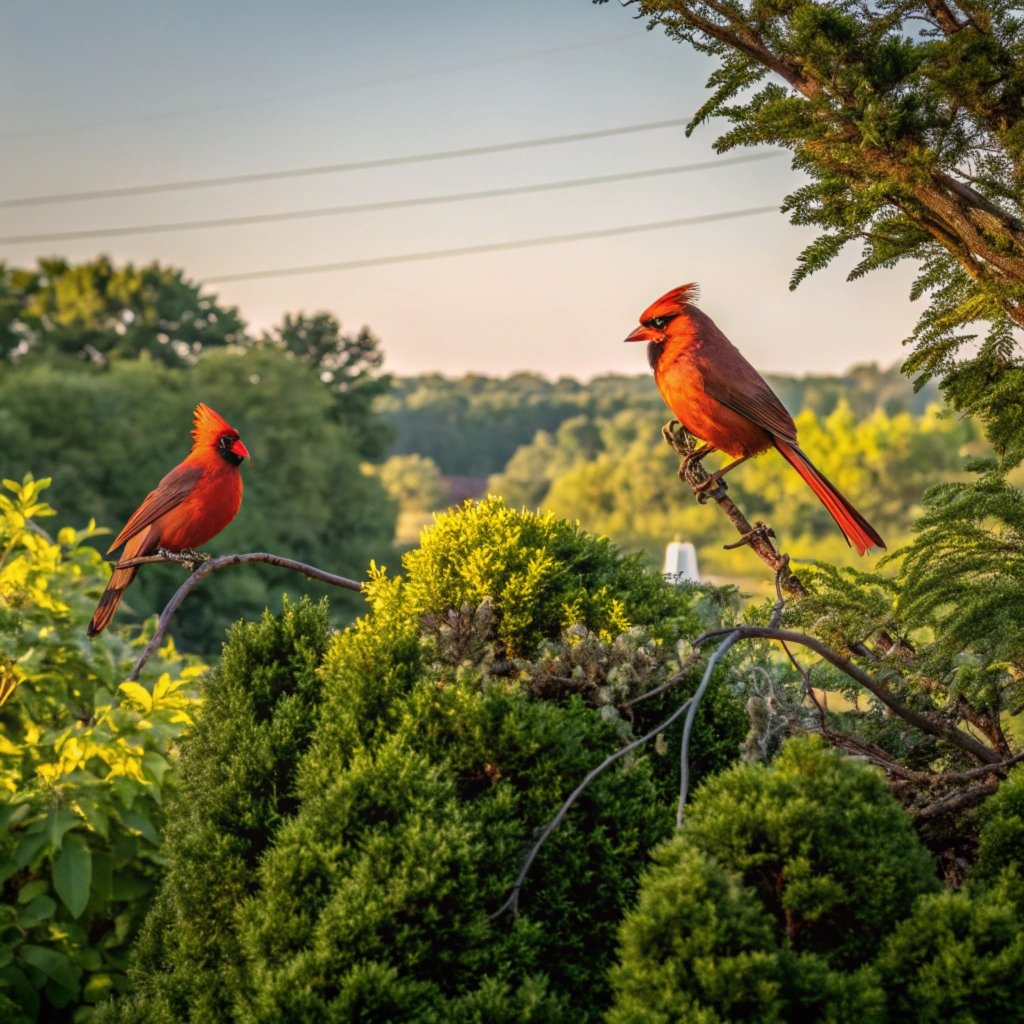
Cardinals are selective about where they settle, and understanding their preferences is key to attracting them to your garden. They look for environments that offer:
- Dense shrubs or trees for nesting and protection from predators and harsh weather conditions.
- Ample food sources, including a variety of seeds, fruits, and insects to sustain them year-round.
- Safe feeding areas, such as platform feeders or ground-level spots where they can comfortably perch and eat.
- Water availability, especially during winter when natural sources may freeze over.
- A mix of open spaces and cover, allowing them to feed while staying close to protective vegetation.
By understanding these preferences and incorporating them into your garden design, you can create an irresistible habitat that cardinals will be drawn to time and time again.
Creating a Cardinal-Friendly Environment in Your Garden
To attract cardinals, you need to create an environment that feels safe, inviting, and meets all their basic needs. Here’s how you can transform your garden into a cardinal paradise:
- Plant dense shrubs like junipers, elderberries, or dogwoods near your garden edges. These provide excellent nesting sites and cover for cardinals to retreat to when they feel threatened.
- Keep feeders close to trees or bushes but far enough to deter squirrels and other potential predators. A distance of about 10-12 feet from dense cover is ideal.
- Use bright colors like red or yellow in your garden decor or feeders since cardinals are naturally drawn to these hues. This can include flowers, bird houses, or even garden ornaments.
- Create layers in your garden with different heights of vegetation. This mimics their natural habitat and provides various levels for feeding, nesting, and perching.
- Maintain some open areas in your yard where cardinals can forage for insects and seeds on the ground.
A well-thought-out layout ensures that cardinals feel secure enough to visit regularly and potentially make your garden their permanent home.
Remember, consistency is key – once cardinals discover your garden is a reliable source of food, water, and shelter, they’re likely to become frequent visitors.
The Best Plants to Attract Cardinals to Your Garden
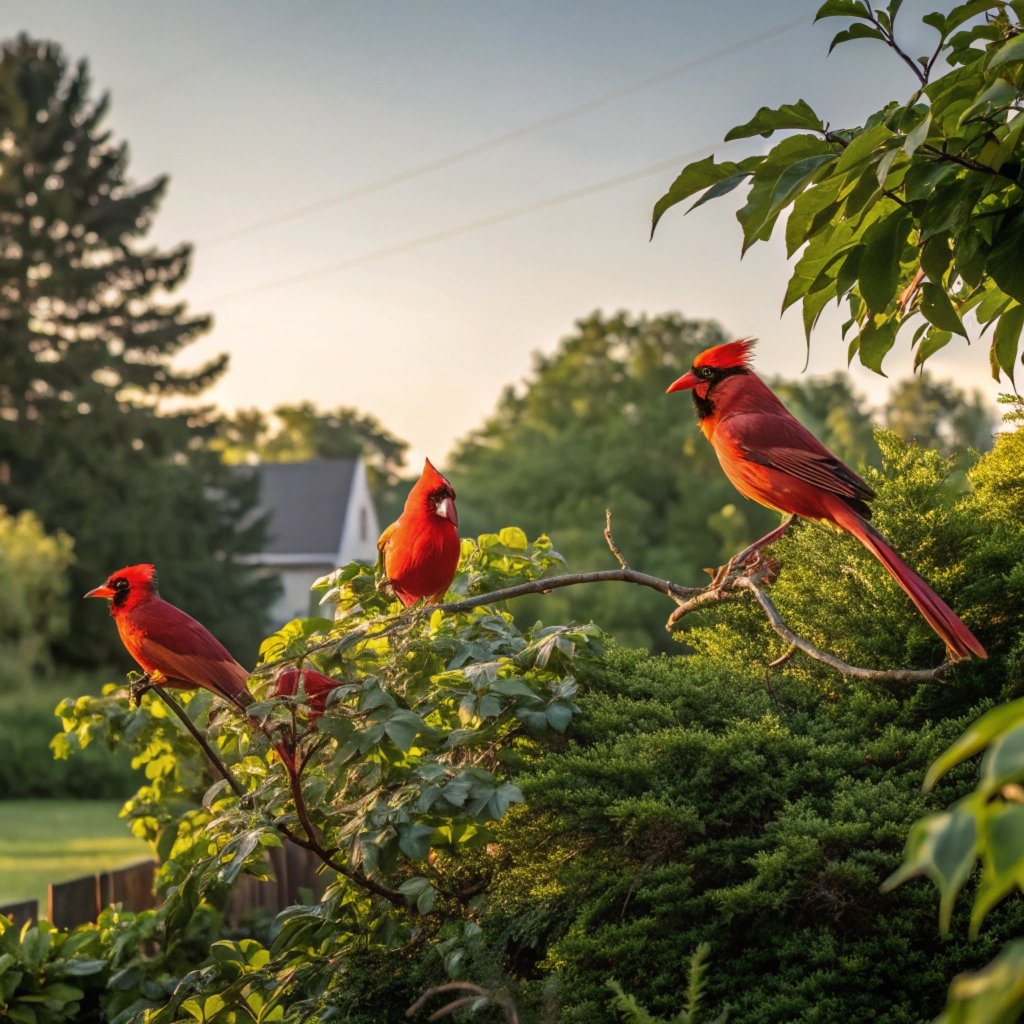
Cardinals love plants that offer both food and shelter. By incorporating a variety of these plants into your garden, you can create a natural and sustainable environment that attracts cardinals year-round. Consider adding these options to your landscape:
- Berry-producing shrubs:
- Mulberries (Morus spp.)
- Elderberries (Sambucus spp.)
- Winterberries (Ilex verticillata)
- Serviceberries (Amelanchier spp.)
- Dogwoods (Cornus spp.)
- Seed-bearing flowers:
- Sunflowers (Helianthus annuus)
- Zinnias (Zinnia spp.)
- Marigolds (Tagetes spp.)
- Coneflowers (Echinacea spp.)
- Black-eyed Susans (Rudbeckia hirta)
- Evergreens:
- Eastern red cedar (Juniperus virginiana)
- American holly (Ilex opaca)
- White pine (Pinus strobus)
- Native grasses:
- Little bluestem (Schizachyrium scoparium)
- Switchgrass (Panicum virgatum)
These plants not only attract cardinals but also enhance your garden’s beauty with their colorful blooms, berries, and foliage.
They provide a natural food source and create a diverse habitat that supports not just cardinals, but a wide range of wildlife.
When planning your garden, try to include a mix of these plants to ensure year-round food availability.
For example, sunflowers and zinnias provide seeds in summer and fall, while berry-producing shrubs offer food in late summer and winter. Evergreens provide essential shelter during harsh weather conditions and can serve as nesting sites in spring.
Remember to choose plants that are native to your region, as these will be best adapted to your local climate and soil conditions. Native plants also tend to require less maintenance and are more resistant to pests and diseases.
Feeding Cardinals: What You Need to Know to Keep Them Coming Back
Food is one of the most effective ways to attract cardinals to your garden. These birds have specific preferences when it comes to their diet, and catering to these preferences can make your garden an irresistible dining spot for them. Here’s what you need to know about feeding cardinals:
Preferred Foods for Cardinals
Cardinals enjoy a variety of seeds and fruits. Their favorites include:
- Sunflower seeds (black oil sunflower seeds are preferred due to their high oil content and thin shells)
- Safflower seeds, which deter squirrels but appeal to cardinals
- Cracked corn
- Peanut hearts
- White millet
- Fruits like blueberries, raspberries, or mulberries
- Mealworms (especially during breeding season for extra protein)
Feeding Tips
To make your feeding stations more attractive to cardinals:
- Use platform feeders or scatter seeds on the ground for easy access. Cardinals prefer to feed on flat surfaces.
- Avoid small tube feeders as they may not support a cardinal’s weight or allow them to perch comfortably.
- Place feeders near protective cover like shrubs or trees, but not so close that predators can easily ambush the birds.
- Offer a variety of foods to cater to different nutritional needs throughout the year.
- Keep feeders clean and dry to prevent the spread of diseases.
- Provide food consistently, especially during winter when natural food sources are scarce.
Seasonal Feeding Considerations
- In winter, focus on high-energy foods like sunflower seeds and suet to help cardinals maintain their body heat.
- During spring and summer, supplement seed offerings with fruits and insects to support breeding pairs and their young.
- In fall, continue offering a variety of seeds as cardinals prepare for winter.
By providing a reliable and diverse food source, you’ll not only attract cardinals but also encourage them to make your garden a regular stop in their daily routine. Remember, once cardinals discover a dependable food source, they’re likely to return frequently and may even bring their offspring to your feeders.
Water Sources: Essential for Attracting and Retaining Cardinals
Water is just as important as food for attracting cardinals to your garden. They need it not only for drinking but also for bathing, which helps them maintain their feathers in top condition.
Providing a reliable water source can make your garden an oasis for cardinals and other birds. Here’s what you can do to ensure cardinals have access to water year-round:
Types of Water Sources
- Birdbaths: Install a birdbath with shallow water. Cardinals prefer water depths of 1-2 inches.
- Fountain or Dripper: Add a fountain or dripper for running water, which attracts more birds due to the sound and movement.
- Shallow Ponds: If you have space, consider creating a small, shallow pond with gently sloping sides.
- Misting Systems: These can be particularly attractive during hot summer months.
Tips for Maintaining Water Sources
- Keep water fresh: Change the water regularly, ideally every 2-3 days, to prevent algae growth and mosquito breeding.
- Clean frequently: Scrub birdbaths and other water features weekly to remove algae and bird droppings.
- Provide year-round access: In winter, use a birdbath heater to prevent water from freezing.
- Create a gentle slope: Ensure the water source has gradually sloping sides for easy access.
- Add pebbles or rocks: Place a few in the water to create shallow areas and perching spots.
- Locate near cover: Position water sources near shrubs or trees where birds can quickly retreat if threatened.
- Maintain consistent levels: Keep water levels consistent so birds know they can rely on your water source.
Seasonal Considerations
- In summer, provide extra water sources as birds need more for cooling and hydration.
- During winter, heated birdbaths become crucial when natural water sources freeze over.
- In spring and fall, maintain clean water to support migrating birds alongside your resident cardinals.
A reliable water source will make your garden an oasis for cardinals and other birds throughout the year.
The sound of moving water can also create a peaceful atmosphere in your garden, enhancing your own enjoyment of the space. By providing both food and water, you’re creating an ideal environment that will keep cardinals coming back day after day.
Providing Shelter and Nesting Sites for Cardinals
Cardinals prefer low nesting sites within dense foliage, typically 3-10 feet off the ground. Creating suitable shelter and nesting areas is crucial for attracting and retaining cardinals in your garden. Here’s how you can provide the perfect sanctuary for these beautiful birds:
Creating Natural Shelter
- Plant shrubs and small trees: Focus on dense, thorny shrubs like:
- Dogwoods (Cornus spp.)
- Serviceberries (Amelanchier spp.)
- Hawthorns (Crataegus spp.)
- Viburnums (Viburnum spp.)
- Evergreen trees: These provide year-round shelter. Good options include:
- Eastern red cedar (Juniperus virginiana)
- Spruce trees (Picea spp.)
- Pine trees (Pinus spp.)
- Create brush piles: Stack fallen branches and twigs in a corner of your yard to create additional shelter.
- Maintain vine-covered structures: Trellises or arbors covered with native vines can offer excellent nesting sites.
Nesting Support
- Avoid heavy pruning during nesting seasons (spring and summer) to maintain cover.
- Offer nesting materials such as:
- Small twigs
- Grass clippings
- Pine needles
- Pet fur (untreated)
- Cotton fibers
- Provide nesting platforms: While cardinals don’t typically use birdhouses, they may use open-sided platforms placed in shrubs or trees.
Tips for Encouraging Nesting
- Maintain a quiet environment near potential nesting sites, especially during breeding season.
- Reduce the use of pesticides in your garden to ensure a healthy environment for cardinal families.
- Keep cats indoors or supervise them outdoors to protect nesting birds and fledglings.
- Plant in clusters to create denser areas of vegetation that mimic natural habitats.
Seasonal Considerations
- In spring, ensure plenty of nesting materials are available.
- During summer, maintain dense foliage for protection from heat and predators.
- In fall, leave some areas of your garden unmaintained to provide winter shelter.
- For winter, evergreen plants become crucial for protection against harsh weather.
By providing ample shelter and suitable nesting sites, you’re creating a safe haven where cardinals can raise their young and seek refuge from predators and harsh weather.
This sense of security will encourage cardinals to make your garden their permanent home, allowing you to enjoy their presence year-round.
Seasonal Tips for Attracting Cardinals Throughout the Year
Different seasons require different strategies to keep cardinals coming to your garden. By adapting your approach throughout the year, you can ensure that your garden remains an attractive habitat for these beautiful birds no matter the weather. Here’s a seasonal guide to help you attract and retain cardinals:
Spring (March – May)
- Provide nesting materials near feeders, such as small twigs, grass clippings, and pet fur.
- Increase protein-rich foods like mealworms to support breeding pairs.
- Plant native flowering plants that will produce seeds later in the season.
- Clean and prepare birdbaths for increased use as temperatures rise.
- Reduce pesticide use to ensure a healthy environment for nesting birds.
Summer (June – August)
- Ensure water sources remain cool and clean, possibly adding a dripper or mister.
- Offer a variety of seeds and fruits to supplement natural food sources.
- Provide shade near feeding and watering stations.
- Maintain dense shrubs for shelter from the heat and protection for fledglings.
- Continue offering protein-rich foods for parents feeding young.
Fall (September – November)
- Leave seed heads on flowers like coneflowers and sunflowers for natural feeding.
- Increase the amount of high-energy foods like sunflower seeds as birds prepare for winter.
- Clean and repair feeders and birdbaths in preparation for winter use.
- Plant berry-producing shrubs that will provide food through winter.
- Create brush piles with fallen leaves and branches for additional shelter.
Winter (December – February)
- Stock up on high-energy seeds like black oil sunflower seeds and safflower seeds.
- Offer suet cakes for additional fat and energy.
- Keep water sources unfrozen using birdbath heaters or by regularly replacing frozen water.
- Provide shelter from harsh weather with evergreen plants and brush piles.
- Clear snow from feeding areas on the ground where cardinals like to forage.
- Increase the number of feeding stations to reduce competition among birds.
Year-Round Tips
- Maintain consistency in your feeding and watering routines.
- Regularly clean feeders and birdbaths to prevent the spread of diseases.
- Monitor for and address any signs of predators or pests that might deter cardinals.
- Adjust the placement of feeders and water sources as needed based on cardinal activity.
- Observe and learn from the cardinals’ behavior in your garden to better cater to their preferences.
FAQs
What are the best foods to attract cardinals?
Cardinals prefer large seeds and hearty foods. The best options include black oil sunflower seeds, safflower seeds, cracked corn, and peanut hearts. During winter, offering suet cakes can provide additional fat and energy.
What type of feeder do cardinals prefer?
Cardinals prefer sturdy platform feeders, tray feeders, or hopper feeders with a wide perch. These allow them to comfortably stand while eating. Avoid small tube feeders, as they don’t accommodate cardinals’ size well.
How can I create a cardinal-friendly environment in my garden?
Plant dense shrubs and trees for shelter and nesting sites. Include berry-producing bushes like elderberry and dogwood. Provide a water source like a birdbath, and ensure there’s a mix of open areas and cover. Maintain consistency in your feeding routine.
Do cardinals migrate?
No, cardinals are non-migratory birds. They stay in the same area year-round, which means you can enjoy their presence in all seasons if you provide the right environment.
What plants attract cardinals?
Cardinals are drawn to plants like Eastern Redbud, Blackberry stands, American Holly, and Flowering Dogwood. These provide food sources and shelter. Native shrubs like Red Osier Dogwood and Spicebush are also appealing to cardinals.
How can I keep water sources available for cardinals in winter?
To prevent water from freezing, use a heated birdbath or frequently refresh still water. This ensures cardinals have access to water year-round, even in freezing temperatures.
Do cardinals use birdhouses?
Unlike many backyard birds, cardinals do not typically use birdhouses or nesting boxes. They prefer to nest in dense shrubs and trees.
How can I attract cardinals during different seasons?
Adjust your feeding strategy seasonally. In spring, provide nesting materials. In summer, ensure clean water sources. In fall, leave seed heads on flowers. In winter, increase high-energy food offerings and keep water sources unfrozen.
Are there any myths associated with cardinal sightings?
Some believe that seeing a cardinal is a visit from a departed loved one. While not scientifically based, this belief can provide comfort to some people.
How long do cardinals typically live?
In the wild, cardinals live an average of 3 years. However, with ideal conditions and minimal threats, they can live up to 15 years.

Hello, I’m Emily Price, the founder of Birds Affection. As a passionate bird enthusiast and spiritual seeker, I’ve always been fascinated by the symbolic meanings and mystical connections between birds and our lives. On this website, I share my knowledge and insights on the spiritual significance of various bird species, exploring their roles as messengers, guides, and teachers. Through my writing, I aim to inspire and educate others on the profound wisdom and beauty that birds bring to our world. Join me on this journey as we delve into the enchanting realm of bird symbolism and discover the hidden meanings behind these magnificent creatures.

